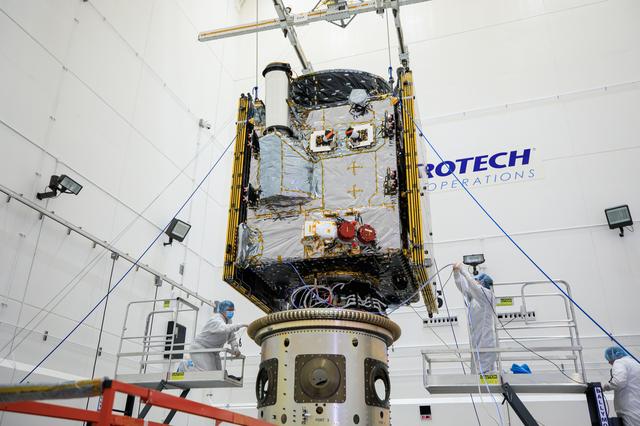
A little while ago, NASA’s Psyche space probe blasted off atop a SpaceX Falcon Heavy rocket from the Kennedy Space Center. After just over an hour, it successfully separated from the rocket’s last stage and set off on its route that will take it into deep space, towards asteroid 16 Psyche, which it will reach towards the end of July 2029 to study its structure composed mainly of iron-nickel.
Within the asteroid belt between Mars and Jupiter and right now about 3.6 billion kilometers away from Earth, asteroid 16 Psyche is one of the largest known. It’s an M-type asteroid, the type with the highest metal content. It has an irregular shape with a maximum length of almost 280 kilometers, which brings it close to the size of a dwarf planet.
Due to its characteristics, 16 Psyche could be the core of a larger planetesimal that was forming in the early history of the solar system but lost its mantle following a collision. However, estimates of its mass and density make this theory less likely, and others were offered over time that can be examined in depth in light of information that will be gathered during the Psyche mission.
The Psyche space probe is equipped with thrusters powered by electricity produced by solar panels using the Hall effect. These are a type of ion thrusters in some ways similar to those used by NASA’s Dawn space probe.
The mission aims to closely examine asteroid 16 Psyche with the instruments aboard the space probe, which include a magnetometer to measure what might remain of a possible magnetic field and, if present, map it. 16 Psyche is massive enough to have a significant gravitational field and be precisely measured as well, a task useful for mapping the asteroid’s internal structure.
For the first time, a laser communications system will be used in deep space. Deep Space Optical Communications (DSOC) system aims to increase communications performance by a factor of 10 to 100 compared to radio transmissions. So far, laser systems have been used only to communicate with satellites orbiting the Earth or with Moon space probes. If it worked as intended, it would greatly improve the possibilities for communications with space probes traveling into deep space.
The Psyche space probe has begun its long journey. Any discovery about the nature and characteristics of asteroid 16 Psyche will help to better understand the processes of formation of planetesimals and therefore of rocky planets.


